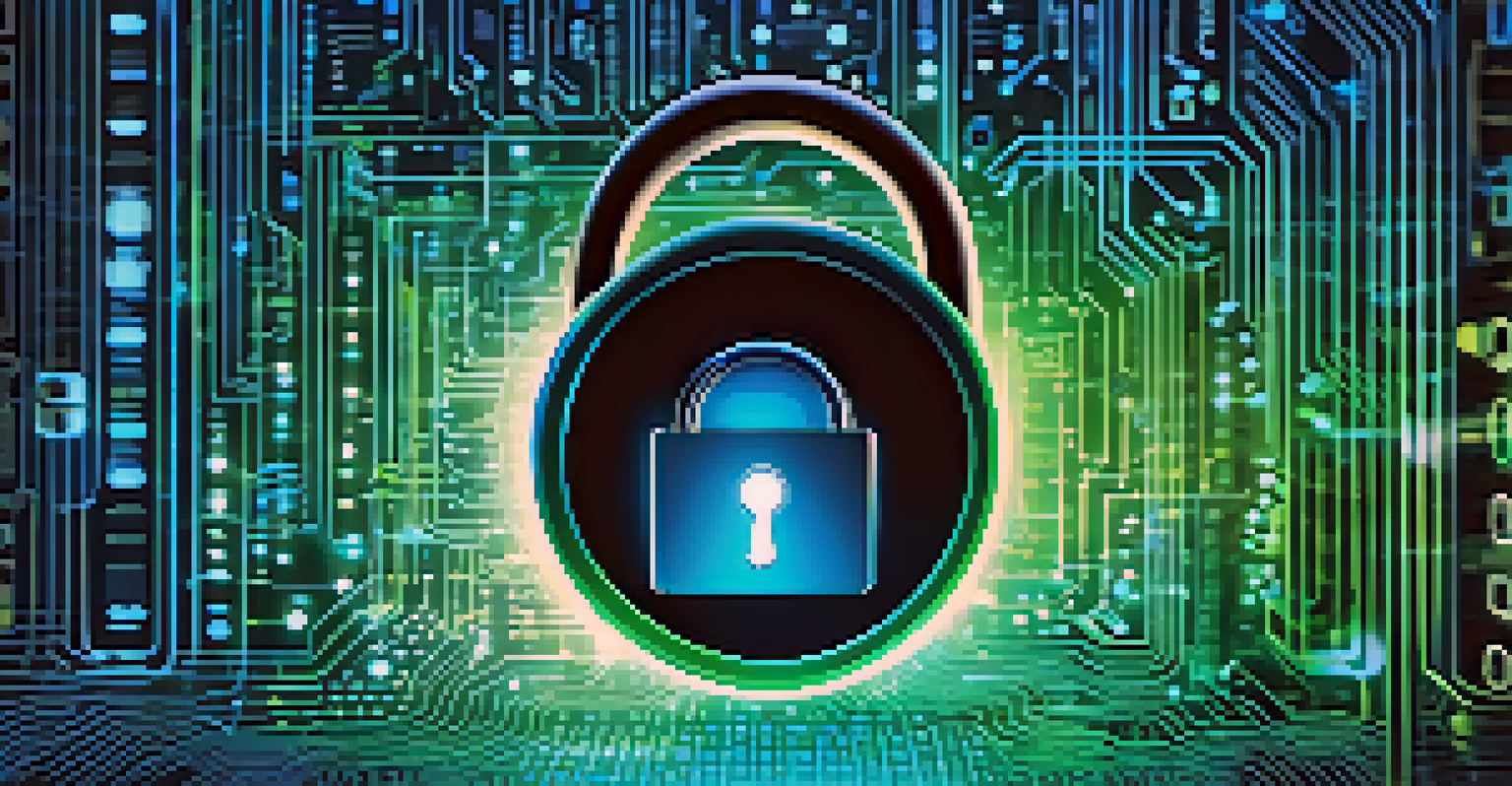Digital Asset Security: Trends and Future Protection Measures

The Importance of Digital Asset Security in Today's World
In an era where everything is interconnected, digital asset security has never been more crucial. With the rise of remote work and online transactions, businesses and individuals are increasingly vulnerable to cyber threats. For instance, a single data breach can lead to significant financial losses and tarnish a brand's reputation.
The question isn’t if you will be hacked, but when.
Moreover, as more sensitive information is stored online, the stakes are higher than ever. Think of digital assets as your personal valuables; just as you wouldn’t leave your home unlocked, you need robust security measures to protect your digital environment. This analogy highlights the urgency of adopting strong security practices.
Therefore, investing in digital asset security is not just a technical necessity but a strategic imperative. Organizations must prioritize security in their operations to safeguard their assets and maintain trust with clients and stakeholders.
Current Trends in Digital Asset Security
As technology evolves, so do the tactics used by cybercriminals, leading to emerging trends in digital asset security. One notable trend is the increased use of artificial intelligence (AI) to enhance security protocols. AI can analyze vast amounts of data, identifying potential threats faster than traditional methods.

Another trend is the rise of zero-trust architecture, which operates on the principle of 'never trust, always verify.' This approach ensures that every access request is scrutinized, reducing the chances of unauthorized access. It's akin to having a bouncer at a club—everyone must prove they belong before entering.
Digital Security is Essential Today
In a connected world, robust digital asset security is crucial to protect against cyber threats and maintain trust.
Additionally, there’s a growing emphasis on user education and awareness. Many security breaches occur due to human error, so teaching employees about phishing scams and safe online practices is essential. The more informed your team is, the stronger your security becomes.
The Role of Regulatory Compliance in Security Measures
Regulatory compliance plays a significant role in digital asset security. Regulations like GDPR and CCPA not only protect consumer data but also push organizations to adopt stricter security measures. Non-compliance can lead to hefty fines, making it a financial and ethical imperative to adhere to these laws.
Security is not a product, but a process.
Moreover, compliance frameworks often provide guidelines that help businesses identify potential vulnerabilities. Think of these regulations as a set of safety nets; they ensure that organizations are not just reactive but proactive in securing their digital assets.
Thus, staying informed about regulatory changes is crucial for any business. By integrating compliance into their security strategy, organizations can enhance their defenses while building customer trust.
Emerging Technologies Enhancing Digital Asset Security
Emerging technologies are reshaping the landscape of digital asset security. Blockchain, for example, offers a decentralized approach that enhances transparency and security. By allowing data to be stored across a network of computers, it becomes nearly impossible for hackers to alter information without detection.
Similarly, biometric authentication methods, such as fingerprint and facial recognition, are becoming more prevalent. These technologies provide an additional layer of security that is far more difficult to bypass than traditional passwords. Just like your unique fingerprint, these methods ensure that only authorized users can access sensitive data.
Emerging Tech Enhances Security
Innovations like AI, blockchain, and biometric authentication are transforming how organizations secure their digital assets.
As these technologies continue to evolve, they hold the promise of creating a more secure digital environment. Organizations eager to protect their assets should keep a close eye on these innovations and consider implementing them into their security strategies.
The Human Element in Digital Asset Security
While technology plays a vital role in digital asset security, the human element cannot be overlooked. Employees are often the first line of defense against cyber threats, making their training and awareness crucial. Regular training sessions can empower staff to recognize suspicious activities and respond appropriately.
Moreover, fostering a culture of security within an organization creates a sense of shared responsibility. When everyone understands the importance of protecting digital assets, the likelihood of breaches decreases significantly. It's like a team sport; when everyone plays their role, the team performs better.
Therefore, investing in human resources is just as important as investing in technology. A well-informed and vigilant workforce can serve as a powerful deterrent against cyber threats.
Future-Proofing Your Digital Asset Security Strategy
To effectively safeguard digital assets, organizations must adopt a forward-thinking approach. Future-proofing involves regularly updating security protocols and technologies to adapt to the evolving threat landscape. Just as you’d regularly service your car to ensure it runs smoothly, your security measures need continuous attention.
Additionally, incorporating flexibility into your security strategy allows you to adapt quickly to new challenges. This might mean integrating new technologies or revisiting your compliance practices to align with regulatory changes. The key is to stay agile and responsive.
Human Training is Key to Security
Empowering employees through training fosters a culture of security, making them vital in defending against cyber threats.
Ultimately, future-proofing your digital security strategy is about anticipating risks and being prepared. By making security a core aspect of your business strategy, you can better protect your digital assets in an unpredictable future.
Conclusion: Embracing a Holistic Approach to Security
In conclusion, digital asset security is a multifaceted challenge that requires a holistic approach. From leveraging emerging technologies to prioritizing employee training, every aspect plays a role in safeguarding your assets. Embracing this comprehensive view not only enhances security but also builds trust with clients and stakeholders.
As we look ahead, staying informed about trends and best practices will empower organizations to navigate the complexities of digital security. It’s essential to remember that security is not a one-time task but an ongoing commitment that evolves alongside technology.

By integrating all these elements into a cohesive strategy, businesses can effectively protect their digital assets and thrive in an increasingly digital world.